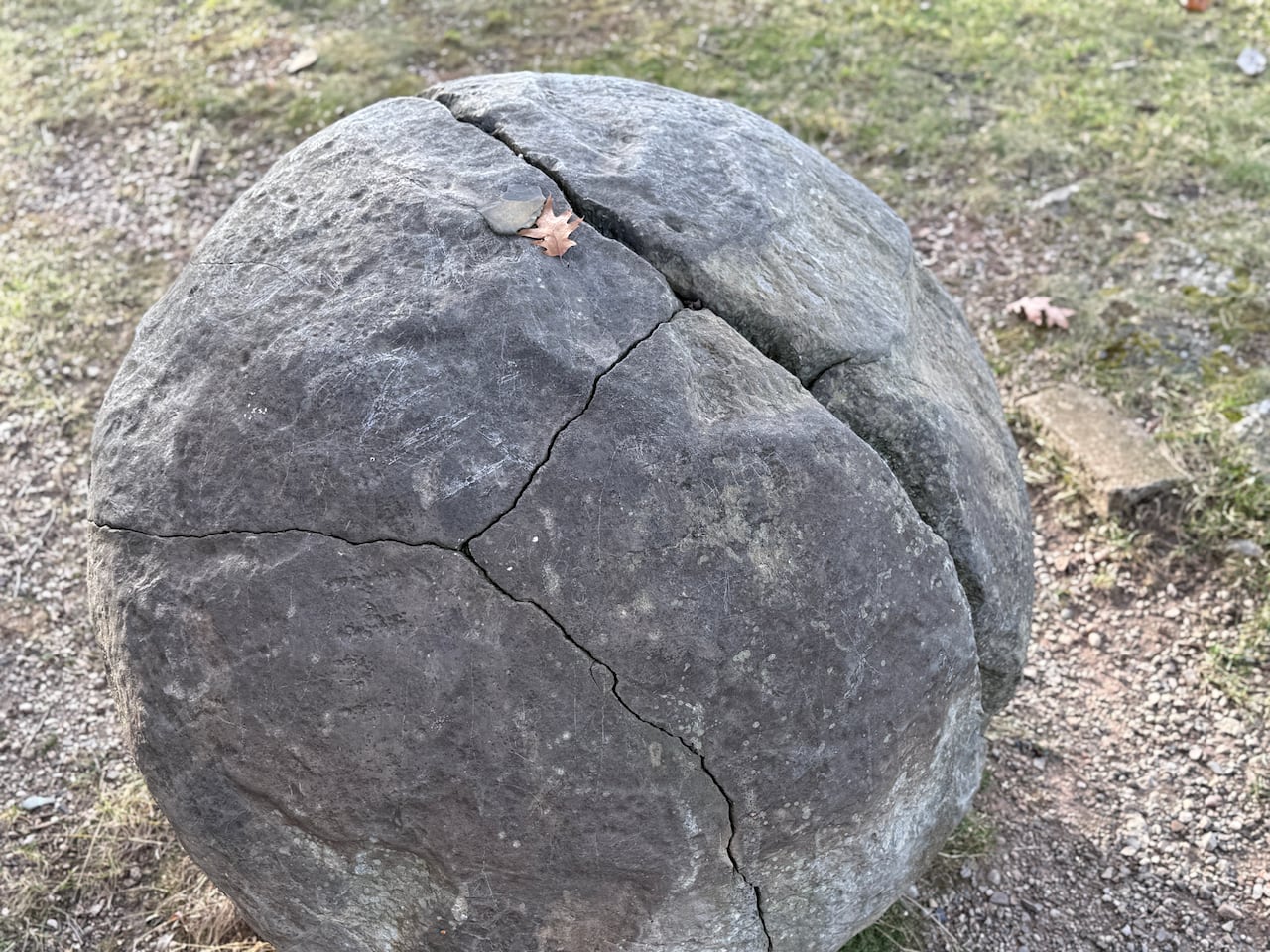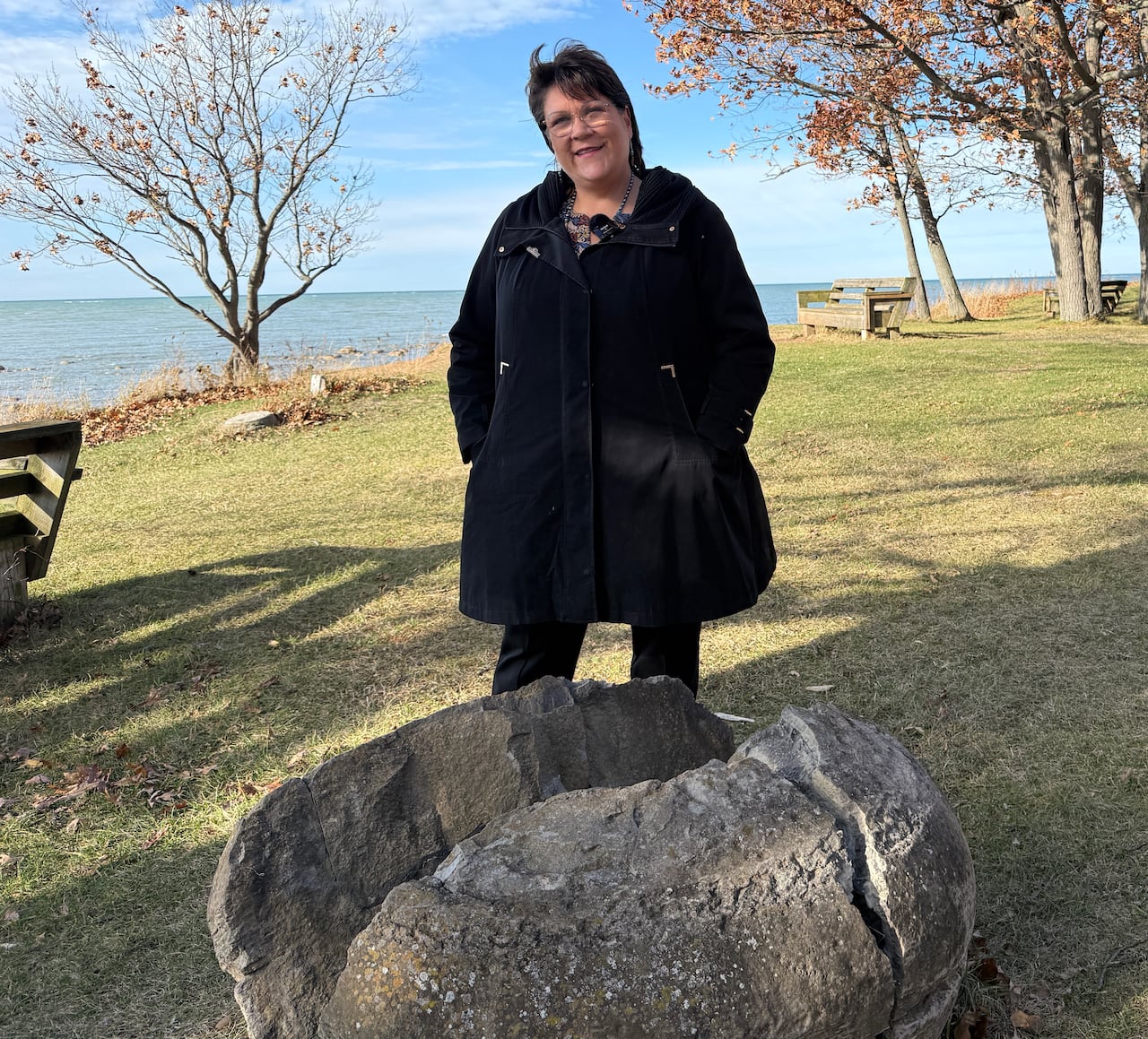Listen to this article
Estimated 4 minutes
The audio version of this article is generated by text-to-speech, a technology based on artificial intelligence.
Two ancient stone spheres were returned to their home at Kettle and Stony Point First Nation on the shores of Lake Huron last Tuesday.
The boulders are called kettles because their shape and size is similar to a cooking pot and are found in the community about 220 kilometres southwest of Toronto.
They have cultural significance to the Anishinaabek. Knowledge keepers describe Kettle Point beach as the nesting place of the Thunderbird: powerful spirits that offer protection and bring healing rains to communities in exchange for safekeeping of their sacred places. The kettles are the eggs.
The point is believed to be the source of power that fades from the stones if they are removed.

Christy Bressette, member of Kettle and Stony Point and vice-provost for Indigenous initiatives at Western University in London, Ont., was integral in having the kettles that had been in the university’s possession returned.
“Getting sacred items back home, beings such as the Thunderbird eggs, is critically important to the community and a really great place to start,” said Bressette.
“Our work is not done.”

Bressette said sharing Indigenous knowledge offers “sustainable solutions” and benefits everyone, not just Indigenous communities.
“This work is supporting a much larger endeavour where we not only reconcile with each other, but also reconcile with the earth,” she said.
The kettles were welcomed home with a pipe ceremony and an honour song.
Bernard George, who spoke during the rematriation ceremony, said it was an important day because the Thunderbird is sacred to the Anishnabek people. It’s on their nation’s flag and in their stories and traditions.
He said elders told him growing up that the Thunderbird comes during storms to warn people to pay attention, and when the kettles crack, he said, their spirit is released.

Jordan George, Kettle and Stony Point’s language revitalization and communications co-ordinator, was on the rematriation working group and said he felt “full” after they were given back.
“But I also know that this is the first step on the journey to repatriating and caring for the thousands of other stones that were taken from our shores,” he said.
He said there were three kettles at the university. The largest and the smallest, along with several fragments, were returned to the nation last Tuesday.
Another kettle, carried on a glacial melt during one of the ice ages and discovered upon excavation for the university’s Weldon Library, will stay at the university.
From the ‘Age of Fishes’
The rocks are calcite concretions and can crack when they’re stored out of water. Desmond Moser, assistant dean of decolonization in Western’s Faculty of Science, said that’s because rain water, which is slightly acidic, can enter through small fractures causing minerals in the kettles to dissolve.
The kettles are unique, he said, because of their composition and age. Some were formed 370 million years ago in the Devonian period (or Age of Fishes) of the Paleozoic era.
The largest kettle returned last Tuesday was discovered in the 1990s, was donated to the university by a gravel quarry owner and used in a teaching rock garden.

Moser said he and his colleagues didn’t know anything about the cultural significance of the kettles or that they were not supposed to be moved.
Last Tuesday’s ceremony was what the community wanted and provided a learning opportunity for scientists, he said.
“Historically geologists, non-Indigenous geologists, haven’t really understood or even taken the time to understand indigenous folks’ relationships with rocks and the land,” he said.
David Cloud, a knowledge keeper and council member, said as a child he always wanted to see Thunderbird eggs come home and was in disbelief that it finally happened.
He grew up near an area known as “the nest” on the lake, due to the concentration of eggs located there and learned teachings about them from his grandparents.
Soon children in the community will learn those teachings at their elementary school.






